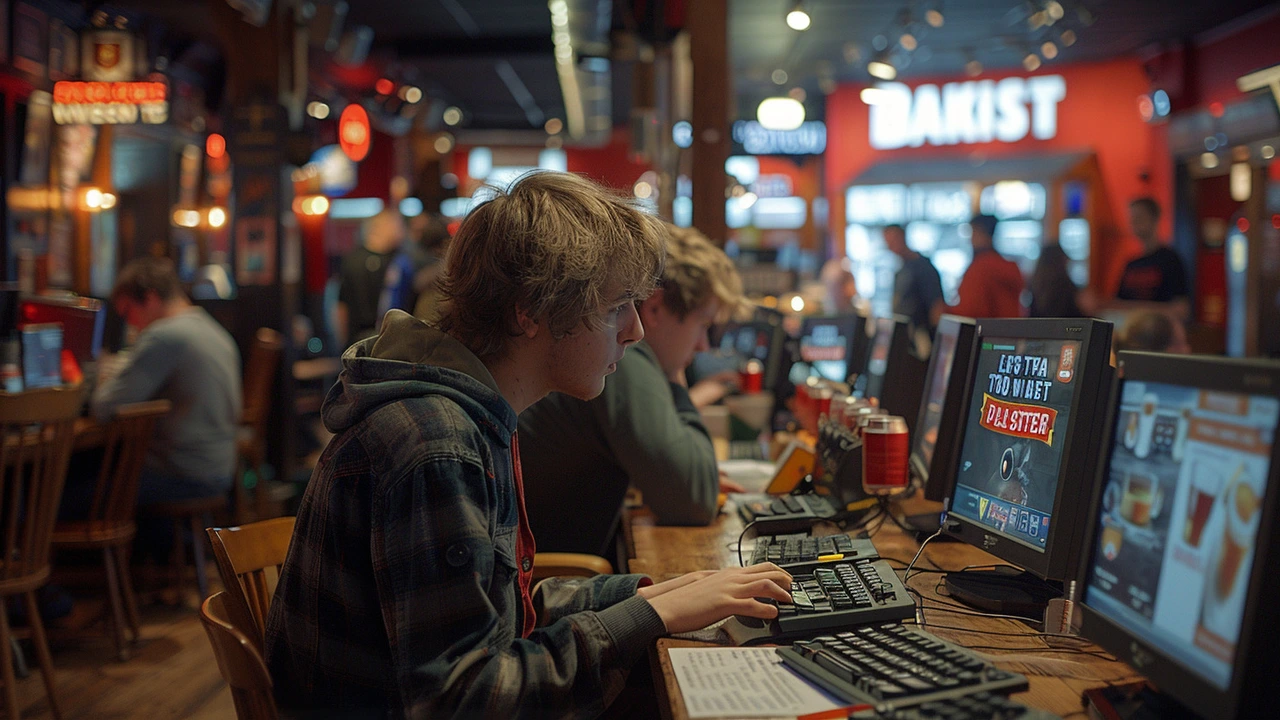
Understanding the Power of In-Game Advertising
In today's digital age, in-game advertising has emerged as a potent tool for marketers looking to expand their reach. As someone deeply entrenched in the digital marketing landscape, I've witnessed firsthand the transformative potential of in-game ads. These aren't just pop-ups or distractions; they're immersive experiences that integrate seamlessly into the virtual worlds gamers are passionate about. By tapping into the vast, engaged audiences that popular games attract, brands can achieve unprecedented visibility and engagement.
Recent studies have shown that the average gamer spends approximately 8.5 hours a week playing video games. This level of engagement offers a unique opportunity for advertisers to make a lasting impression. Unlike traditional media, where ads can be skipped or ignored, in-game advertising commands attention. It's a space where creativity meets technology, and when done right, the results can be both captivating and effective.
Strategies for Successful In-Game Ad Placements
Placing ads within games requires a thoughtful approach. It's not just about finding a spot for your ad; it's about ensuring it adds value to the player's experience. Brands that succeed in this space are those that respect the gaming environment, integrating their messages in ways that feel natural and enhancing rather than intrusive. Gamification, or the incorporation of game-like elements into the ad design, can significantly increase engagement and recall. Offering players rewards, such as in-game currency or items, in exchange for interacting with your ad, can lead to positive brand associations.
Another effective strategy is selecting the right games for your advertisements. Not all games are created equal in the eyes of your target audience. Understanding the demographics, interests, and behaviors of the game's players is crucial. For example, advertising a new energy drink within a fast-paced racing game might resonate more effectively than placing the same ad in a slow-paced strategy game.
Case Studies: Brands That Nailed In-Game Advertising
Many brands have successfully leveraged in-game advertising to achieve their marketing objectives. One notable example is the collaboration between a popular soda brand and a famous open-world action game. By creating an in-game quest that guided players to a virtual concert, the brand not only increased its visibility but also connected with the audience in a memorable way. This event not only boosted social media mentions but also resulted in a significant spike in sales.
"We saw a 20% increase in sales directly correlating to our in-game advertising campaign." - Marketing Director of the Soda Brand
Another success story comes from a sportswear brand that integrated its products into a popular sports simulation game. Players could outfit their in-game avatars with the brand's latest gear, effectively turning every game session into a dynamic fashion showcase. This clever use of product placement increased brand awareness among a highly engaged and relevant audience.
Leveraging Analytics to Optimize In-Game Advertising
One of the keys to successful in-game advertising is data. By leveraging analytics, marketers can gain valuable insights into how their ads are performing and how they're being received by gamers. Monitoring metrics such as engagement rates, click-through rates, and conversion rates can help advertisers refine their strategies for maximum impact. Furthermore, using A/B testing to compare different ad formats, placements, and messages allows for a data-driven approach to optimizing ad performance.
Advanced analytics can also provide a deeper understanding of player behavior and preferences, enabling brands to tailor their messaging and creative strategies to better resonate with their target audience. This level of personalization is not just beneficial; it's necessary in a space as competitive and fast-paced as in-game advertising.
The Future of In-Game Advertising
The future of in-game advertising is incredibly bright. As technology continues to evolve, so too will the ways in which brands can connect with gamers. Augmented reality (AR) and virtual reality (VR) are set to offer new dimensions of immersion, allowing for even more creativity in ad placements. Imagine, for instance, an AR game that lets players interact with virtual versions of products in their real-world environment. The possibilities are virtually endless.
Moreover, as gaming platforms become more interconnected with social media and other digital channels, the potential for cross-platform campaigns will expand. This integration will allow brands to create more comprehensive and cohesive digital marketing strategies, leveraging the strengths of in-game advertising while connecting with audiences across multiple touchpoints.
In conclusion, in-game advertising presents a thrilling frontier for marketers aiming to drive business growth. By embracing the unique opportunities this space offers and approaching it with creativity and strategic insight, brands can not only reach but engage their audiences in profoundly impactful ways. The key is understanding the gaming community, respecting the medium, and leveraging technology to create immersive, value-added experiences for players.